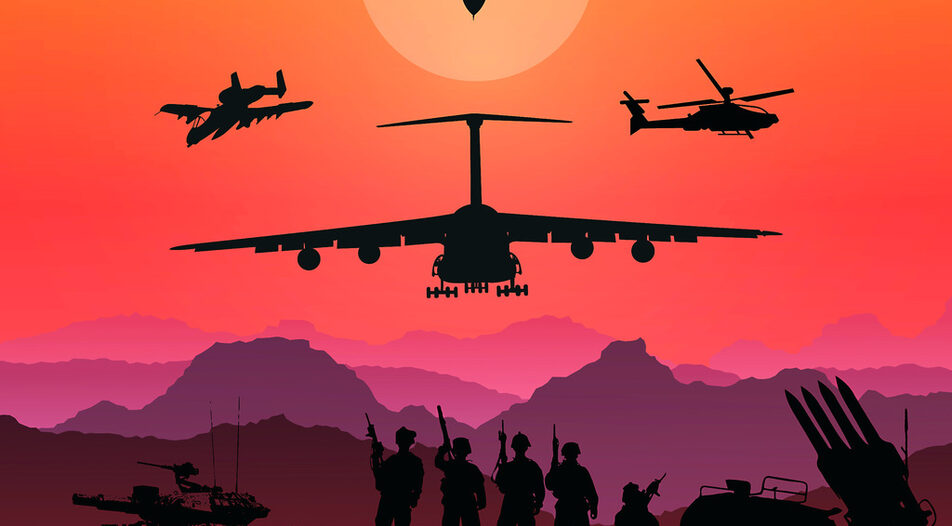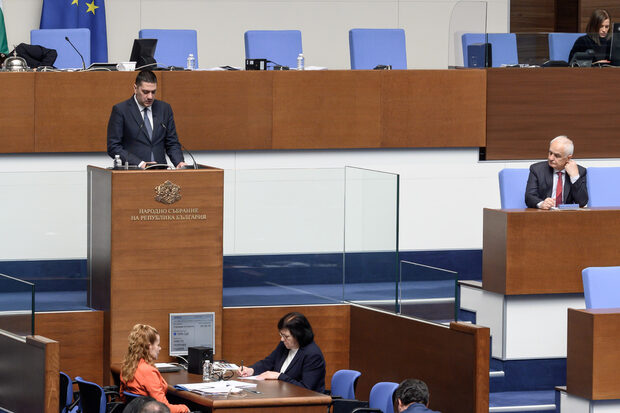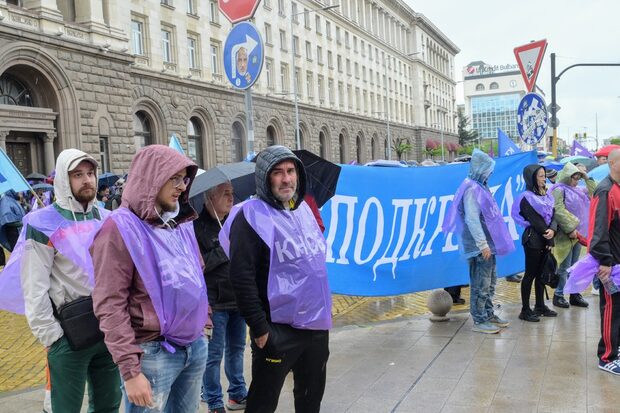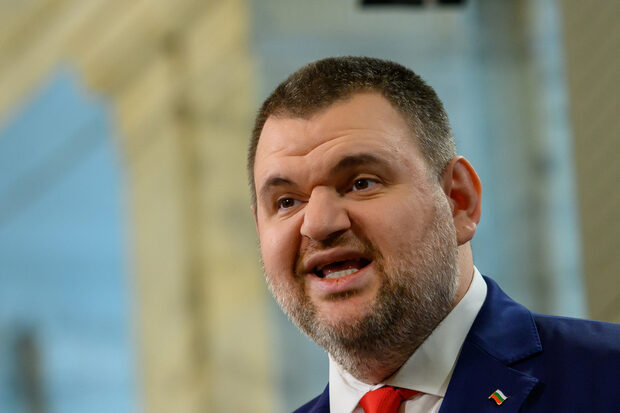"They shall beat their swords into plowshares, and their spears into pruning hooks; nation shall not lift up sword against nation, neither shall they learn war anymore." This famous Biblical quote likely inspired prominent Soviet sculptor Yevgeny Vuchetich to create his famous sculpture of the same name that now stands in front of the UN headquarters in New York. It was placed there in 1957, during a rare thaw in relations between the two global superpowers, when optimism for global peace seemed possible.
The last 30 years more or less resembled a similar period for Europe. With the exception of the war of Yugoslav secession, which looked more like a civil war to the West, it appeared that interstate conflict in the continent would be a relic of a long-forgotten past. So-called soft power, mutually beneficial business ties and diplomacy, seemed to be reliable enough tools to prevent a direct military clash with anyone in the European sphere. In the early hours of 24 February, when Russian tanks crossed the Ukrainian border from the east, north and south, this entire security architecture, carefully built over years, literally collapsed.
Regardless of how the conflict plays out in the near future, it has already shifted the tectonic plates of European defense, paved the way for future militarization of EU societies and the increase of military spending, at least to the 2 percent of GDP commitment set out during the 2014 Wales Summit. The plowshares, it appears, will be turning back into swords all across Europe.
Europe rearms. Where's Bulgaria?
It is inevitable that Bulgaria will also join this process. On the one hand, this will most likely lead to a restructuring of state finances, which to some extent will be to the detriment of the civilian sector. On the other, however, it will open up new opportunities for the development of the defense industry, for doing business in general and for the transfer of high technologies to Bulgarian companies, which will then be able to use them for non-military purposes - something that has been happening for years in countries with strong armies and military industries, such as Israel.
Russia's invasion of Ukraine, just a few hundred kilometers from Bulgaria's border, will kick-start at least some of the Bulgarian army modernization projects that have been repeatedly left on the backburner over the past 20 years. Since taking office, current Defense Minister Dragomir Zarkov has announced a list of nine priority rearmament programs. In the context of the current geopolitical situation, he has a chance to get broad political support for their implementation.
The first signs that this is possible are already in sight - in the update of the state budget, the Ministry of Defense (MoD) was allocated 60 million BGN to pay for its ongoing acquisitions (although in the draft update it was supposed to receive 300 million BGN for the acquisition, modernization, maintenance and repair of combat equipment and another 110 million BGN for the reconstruction of Graf Ignatievo air base so that it can receive our new F-16 fighter jets in about 3 years).
But since the main military projects will be worth hundreds of millions, and in some cases even billion(s) of leva, one of the requirements that Sofia will have for the transnational defense giants will certainly be to return some of this money to the Bulgarian economy, for industrial cooperation and investment in high-tech activities, so that these huge expenditures can generate added value for both the civilian sector and business in the longer term.
To achieve this, foreign corporations in the fields of aviation, naval forces, ground forces, communications, cyber defense, and even space technology will have to cooperate with local subcontractors. In the worst case, Bulgarian companies will be given the opportunity to join their global supply chains, and in the best case they will be able to contribute to defense projects with their own original products. So, while the war in Ukraine is a crisis of unprecedented proportions for Europe, it is also an opportunity: for the Bulgarian army, mired in the past, which will finally have to strike a blow heading into the 21st century, and for Bulgarian business, especially that section trying to invest in modern technological solutions.
Aviation to the fore again
The latest attempt at rearmament is once again poised to kick off with the usual suspect - the Air Force. The fundamental dilemma in this case is that Russia's invasion of Ukraine has made the problem of maintaining Bulgaria's aging Soviet MiG-29 fighters ever more pressing, and President Rumen Radev will certainly fight to the end for the cause of his former comrades.
The combat aircraft that Bulgaria currently relies on for air policing and air defense are likely to exhaust their flying resources sometime next spring. Unfortunately, the first units of the new F-16 Block 70 multi-role fighter aircraft ordered (and already paid for by US defense giant Lockheed Martin) will not arrive until early 2025. Unless some creative solution is found, this will open an extremely unpleasant gap of at least 2 years, in which it may turn out that Bulgarian military aviators will mostly be idle, while the country relies on intensive NATO air policing from Bulgarian territory or from air bases in neighboring countries.
A quick transition to US fighters will also not be possible due to the dearth of sufficiently trained pilots. At present, 12 people are undergoing training in the US, of whom only one has already become authorized to fly the F-16 by himself. Another aviator is currently training with a T-38 and is due to transition to a real fighter in the near future. The fundamental problem is that the US military does not recognize the track record of foreign pilots on other combat aircraft and is effectively starting their training from scratch. Moreover, it prefers to invest in young officers with no previous experience, which means automatic retirement for the most experienced Bulgarian aces, who are already too old to be re-trained by American standards.
Hence President Radev and the executive are currently looking hard for an option to find "replacement" fighter jets, at least temporarily. If such a solution is found, the combat fleet could fly until the new F-16s arrive (with enough trained pilots). The head of state and the prime minister have already held talks with the US and the Netherlands for used F-16s, with France for Rafale, and with Italy and Germany for Eurofighter Typhoon. The latter two options are much more expensive in terms of operating costs, but the Air Force would avoid the complicated and cumbersome US procedure of re-training existing pilots by Pentagon instructors.
Will Sofia buy more F-16s?
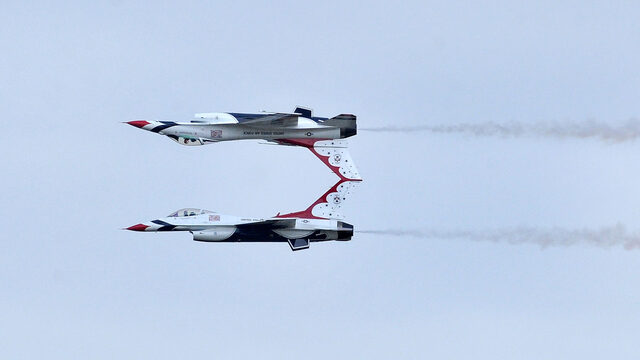
In parallel, Bulgaria will soon have to decide on the possible acquisition of a second batch of 8 additional brand new F-16 Block 70s. A query about the specifics of such a deal has already been made by caretaker defense minister Georgi Panayotov, but the US answer is unlikely to please politicians or taxpayers. Contrary to expectations, the second "semi-squadron" will have a higher price tag compared to the first 2019 contract, according to a State Department draft decision submitted to the US Congress for approval. The indicative value of the deal is 1.673 billion USD, or about 3 billion BGN (for comparison, the first batch cost about 2.2 billion BGN). A cheaper price could be achieved if Bulgaria decided to cut the armament of the aircraft once again - something that would be extremely unwise given the current situation on NATO's eastern flank. The relatively good news is that this time the payment could be made in two installments and not in a single lump sum.
To judge from some of the statements of outgoing Finance Minister Assen Vassilev, it is quite likely that the second batch of jets will be ordered only after the first batch (delayed because of the Covid-19 pandemic) starts arriving. In the meantime, Bulgaria may try to acquire similar "second-hand" combat aircraft, including under US President Joe Biden's resuscitated World War II-era U.S. military aid Land-Lease law.
In principle, it was designed as a fast-track procedure for providing arms to Ukraine. However, the Land-Lease could also be used to reinforce allied armies on NATO's eastern flank, including triangular schemes, in which Eastern European states provide Soviet-era weapons to Kyiv and replace them with US-supplied weapons. A similar scheme is currently being applied by Germany, which does not dare transfer its tanks and heavy weapons systems directly to Ukraine, but provides them to third countries who do the exporting.
New radars and air defense
The transition to NATO fighters, whatever they are, inevitably entails re-equipping the army with new NATO 3D radars. This is something that has also been delayed for years and hinders the complete integration of Bulgaria into the alliance's air defense. According to preliminary data, the indicative amount for the purchase of at least 7 locator stations will be around 390 million BGN, to be paid in tranches. It is very likely that at least part of the funds earmarked for the army's modernization would go towards the first installment of the purchase of 3D radars. So far, it is known that requests for non-binding offers have been sent to Lockheed Martin, Leonardo, Thales, Raytheon, Saab, Indra, Elta Systems, Bae Systems and Hensoldt.
The war in Ukraine and the severing of military ties with Russia will most likely lead to a replacement of the Bulgarian air defense in the medium term, as the old Soviet S-300 long-range anti-aircraft missiles are not compatible with NATO air defense. They can hardly be put to use effectively if there is a more massive forward deployment of allied military formations and especially aircraft on the alliance's eastern flank. Unfortunately, their US counterparts Patriot or THAAD are super-expensive systems that the army can ill afford.
Hence the Defense Ministry has now released technical specifications for so-called "air defense for object and area coverage". The first are mobile anti-aircraft missiles with a range of about 15 km, which can be used for local protection of the ground mechanized brigades. The latter are medium-to-long range systems that cover the airspace around strategic areas (e.g. the capital, Kozloduy NPP, major air bases, etc.) within a radius of at least 50 km. The alternative anti-aircraft systems in question are unlikely to be as astronomically priced. Some are even tailored to use the same missiles that will equip the F-16 fighters anyway.
Black Sea Defense
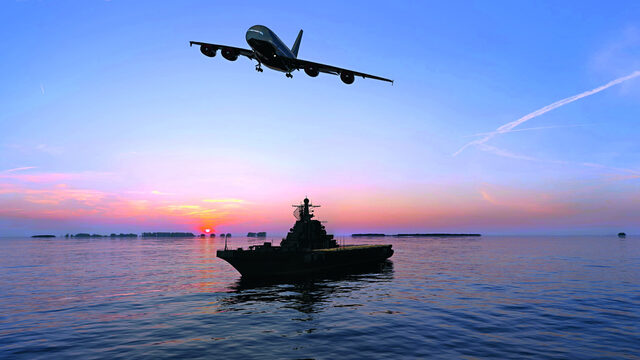
From a military-strategic point of view, the defense of the Bulgarian Black Sea coast should undoubtedly become the focus of the army's modernization, as this is our only area of direct contact with Russia and its armed forces. Fortunately, the MoD was able to set in motion its mega-project of modernizing the fleet even before the invasion of Ukraine.
At the end of its mandate, the last GERB government concluded a contract worth nearly 1 billion BGN, including VAT, for the acquisition of two modular patrol vessels. They will be designed by the German company Fr.Lürssen Werft GmbH & Co.KG, and their hull construction and assembly will be carried out in the Varna shipyard MTG Dolphin. The vessels are to be handed over to the fleet in 2025 and 2026, respectively. MoD will also try to acquire two second-hand diesel-electric submarines, most likely from Italy or Norway. It will also equip its fleet of Panther helicopters with torpedoes and systems for combating surface and underwater targets.
It's not only good news, however. When former interim MoD head Panayotov took over last year, it turned out that the MoD had managed to achieve the "unprecedentedly low" cost of warships (in the words of defense chief Admiral Emil Eftimov) by not ordering ammunition - missiles, torpedoes and shells for the guns. In Mr Panayotov's words, the cost of ammunition for the two patrol vessels would range between "400-500 million BGN and 1 billion BGN."
In recent weeks, however, the government has begun to make up for this shortfall. At the end of May, the Council of Ministers voted to acquire anti-ship missiles by direct contracting. Those are likely RBS-15 MK3 munitions from Diehl Defense and Saab, which Bulgarian admirals have long fought for. The alternative bid made by the Norwegian manufacturer Kongsberg for its NSM anti-ship missiles seems to have been ignored, despite its massive marketing campaign.
The acrimonious dispute over whose "smart" munitions are better and should be installed on future patrol ships has sparked the drive for yet another modernization project for the Army - that of shore-based missile batteries. As early as last summer, Defense Chief Admiral Emil Eftimov publicly floated the idea that one type of missile, which is radar-guided and will be installed on corvettes, could be supplemented with the other, which uses a smart visual-recognition system and can be fired from a mobile chassis on land.
The conflict in Ukraine demonstrated how the Neptune coastal system can successfully sink ships of the caliber of the Moskva flagship, and the dispatch of Danish Harpoon anti-ship missiles to Odessa has forced the Russian Navy to withdraw 100 km away from the land. Therefore, it is quite logical that the modernization project to buy coastal missile complexes has quickly found a place among current defense priorities.
The NATO battalion marches on
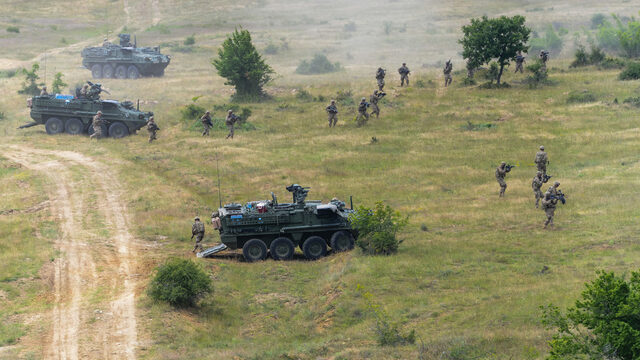
The failed attempt by the first Defense Minister of the Petkov cabinet, Stefan Yanev, to create an all-Bulgarian battalion battle group to reinforce NATO's eastern flank has once again focused attention on the dramatic shortfalls in the capabilities of the country's ground forces. In theory, Bulgaria ought to have six battalions forming two brigades certified by alliance standards. However, it is a public secret that these combat units basically use the same weapons from the Warsaw Pact era on a rotational basis. So if they all have to be alerted at the same time, the infantry may not even be able to assemble a single combat-capable brigade.
Therefore, it is critical for the functioning of the army in general that the mega-project to buy a new type of NATO armored fighting vehicle for the ground forces be set in motion as soon as possible. Unfortunately, over the past quarter century, the infantry has always remained at the tail end of modernization, trailing the air force and navy. Now this might change.
It is quite likely, however, that the project to rearm the ground troops with NATO combat vehicles will also undergo a serious metamorphosis in the context of the war in Ukraine. Lessons from the Russian invasion show that the mechanized infantry of the future will go hand in hand with the acquisition of mobile tactical air defense, with more advanced and more long-range artillery (including Western rocket systems for volley fire or modernization of existing Grad installations), reconnaissance and strike drones, and the modernization of tanks and their self-defense systems.
All this means that if Bulgaria wants to have modern troops, which can fight effectively side by side with other NATO armies in an allied format, the budget of 1.46 billion BGN voted by the National Assembly, including VAT, will have to be seriously revised upwards in one way or another.
"They shall beat their swords into plowshares, and their spears into pruning hooks; nation shall not lift up sword against nation, neither shall they learn war anymore." This famous Biblical quote likely inspired prominent Soviet sculptor Yevgeny Vuchetich to create his famous sculpture of the same name that now stands in front of the UN headquarters in New York. It was placed there in 1957, during a rare thaw in relations between the two global superpowers, when optimism for global peace seemed possible.
The last 30 years more or less resembled a similar period for Europe. With the exception of the war of Yugoslav secession, which looked more like a civil war to the West, it appeared that interstate conflict in the continent would be a relic of a long-forgotten past. So-called soft power, mutually beneficial business ties and diplomacy, seemed to be reliable enough tools to prevent a direct military clash with anyone in the European sphere. In the early hours of 24 February, when Russian tanks crossed the Ukrainian border from the east, north and south, this entire security architecture, carefully built over years, literally collapsed.








